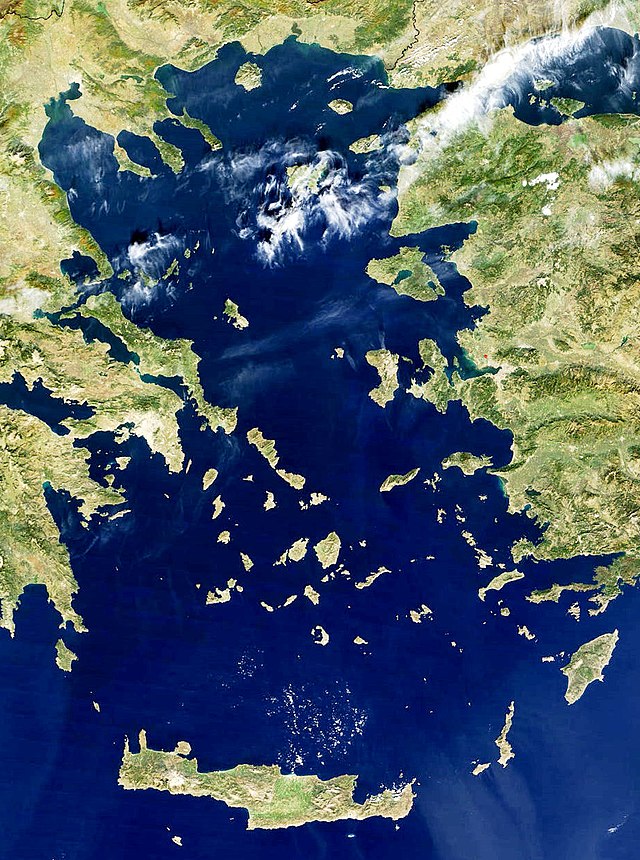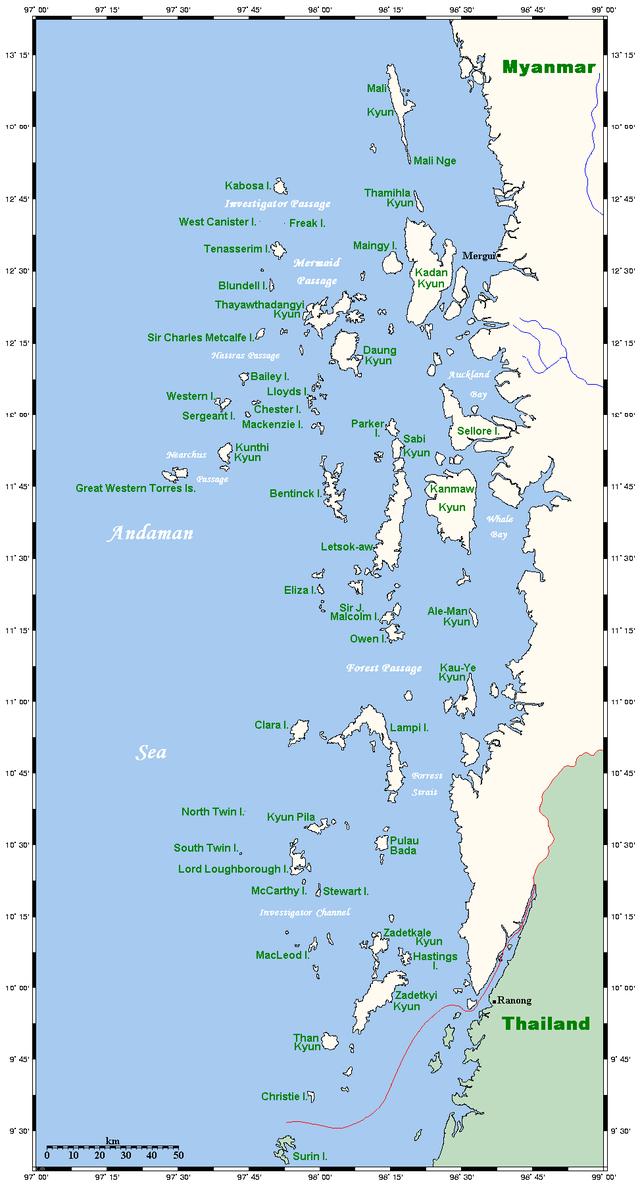Top Qs
Timeline
Chat
Perspective
Archipelago
Collection of islands From Wikipedia, the free encyclopedia
Remove ads
Remove ads
An archipelago (/ˌɑːrkəˈpɛləɡoʊ/ ⓘ AR-kə-PEL-ə-goh),[1] sometimes called an island group or island chain, is a chain, cluster, or collection of islands. An archipelago may be in an ocean, a sea, or a smaller body of water. Example archipelagos include the Aegean Islands (the origin of the term), the Canadian Arctic Archipelago, the Stockholm Archipelago, the Malay Archipelago (which includes the Indonesian and Philippine Archipelagos), the Lucayan (Bahamian) Archipelago, the Japanese archipelago, and the Hawaiian Archipelago.



Remove ads
Etymology
The word archipelago is derived from the Italian arcipelago, used as a proper name for the Aegean Sea, itself perhaps a deformation of the Greek Αιγαίον Πέλαγος.[2][3] Later, usage shifted to refer to the Aegean Islands (since the sea has a large number of islands). The erudite paretymology, deriving the word from Ancient Greek ἄρχι-(arkhi-, "chief") and πέλαγος (pélagos, "sea"), proposed by Buondelmonti, can still be found.[4]
Remove ads
Geographic types
Summarize
Perspective
Archipelagos may be found isolated in large amounts of water or neighboring a large land mass. For example, Scotland has more than 700 islands surrounding its mainland, which form an archipelago.
Depending on their geological origin, islands forming archipelagos can be referred to as oceanic islands, continental fragments, or continental islands.[5]
Oceanic islands
Oceanic islands are formed by volcanoes erupting from the ocean floor. The Hawaiian Islands and Galapagos Islands in the Pacific, and Mascarene Islands in the south Indian Ocean are examples.
Continental fragments
Continental fragments are islands that were once part of a continent, and became separated due to natural disasters. The fragments may also be formed by moving glaciers which cut out land, which then fills with water. The Farallon Islands off the coast of California are examples of continental islands.
Continental Islands

Continental islands are islands that were once part of a continent and still sit on the continental shelf, which is the edge of a continent that lies under the ocean. The islands of the Inside Passage off the coast of British Columbia and the Canadian Arctic Archipelago are examples.
Artificial archipelagos
Artificial archipelagos have been created in various countries for different purposes. Palm Islands and The World Islands in Dubai were or are being created for leisure and tourism purposes.[6][7] Marker Wadden in the Netherlands is being built as a conservation area for birds and other wildlife.[8]
Remove ads
Superlatives
The largest archipelago in the world by number of islands is the Archipelago Sea, which is part of Finland. There are approximately 40,000 islands, mostly uninhabited.[9]
The largest archipelagic state in the world by area, and by population, is Indonesia.[10]
See also
References
External links
Wikiwand - on
Seamless Wikipedia browsing. On steroids.
Remove ads
